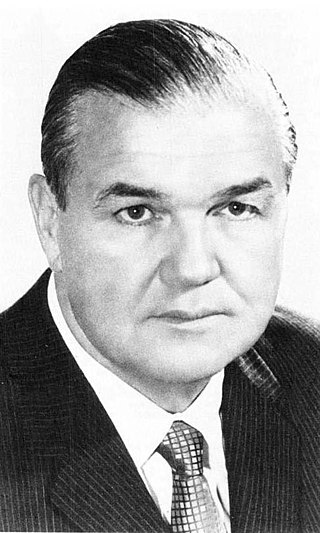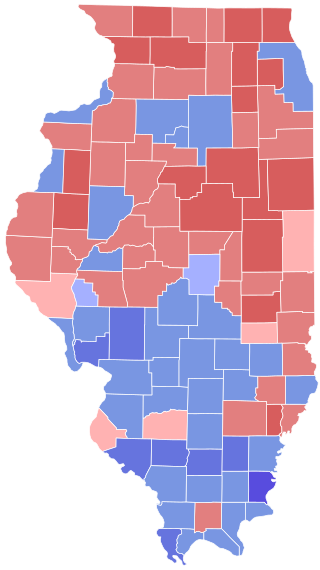The Illinois Solidarity Party was an American political party in the state of Illinois. It was named after Lech Wałęsa's Solidarity movement in Poland, which was then widely admired in Illinois, which has a very large Polish-American population, especially around Chicago.
Janice Hart was an unsuccessful candidate for the office of Illinois Secretary of State in 1986.

Adlai Ewing Stevenson III was an American attorney and politician of the Democratic Party who represented Illinois in the United States Senate from 1970 to 1981. A member of the prominent Stevenson family, he also served as a member of the Illinois House of Representatives and Illinois Treasurer. He unsuccessfully ran for governor of Illinois in 1982 and 1986. He had been awarded Japan’s Order of the Sacred Treasure with gold and silver stars and was an honorary Professor of Renmin University, China.

Michael J. Howlett Sr. was an American politician who served as the 24th Illinois Auditor of Public Accounts and 33rd Illinois Secretary of State. He was the Democratic nominee for Governor of Illinois in the 1976 Illinois gubernatorial election.

George Edward Sangmeister was an American politician and United States Representative from Illinois. He originally represented Illinois' 4th congressional district, before it was renumbered as the 11th district.

The 2010 Illinois gubernatorial election took place on November 2, 2010. Incumbent Democratic Governor Pat Quinn was elected to a full term in office, having become governor in 2009 following the impeachment and removal of Governor Rod Blagojevich. Quinn was elected as the Democratic nominee, the Illinois Green Party nominee was attorney and 2006 nominee Rich Whitney, the Republican nominee was State Senator Bill Brady, the Libertarian Party nominee was Lex Green, and Scott Lee Cohen ran as an independent.

The 1980 United States Senate election in Illinois was held on November 4, 1980. Incumbent Democrat U.S. Senator Adlai Stevenson III decided to retire. Democrat Alan J. Dixon won the open seat.

The 1990 Illinois gubernatorial election was held on November 6, 1990. Incumbent Governor James R. Thompson chose to retire instead of seeking reelection to a fifth term. Republican candidate Jim Edgar won his first of two terms in office, defeating Democrat Neil Hartigan by a narrow margin of about 80,000 votes. This election was the first open-seat gubernatorial election in Illinois since 1952.

The 1982 Illinois gubernatorial election was held in Illinois on November 2, 1982. Incumbent Republican governor James R. Thompson won a third term in office, defeating the Democratic nominee, former United States Senator Adlai Stevenson III, by a slim margin of about 5,000 votes.

The 1976 Illinois gubernatorial election was held in Illinois on November 2, 1976. Incumbent first-term Democratic governor Dan Walker lost renomination to Illinois Secretary of State Michael Howlett, who was an ally of Chicago mayor Richard J. Daley. Howlett then lost the general election to Republican nominee James R. Thompson. This election was the first of seven consecutive Republican gubernatorial victories in Illinois, a streak not broken until the election of Democrat Rod Blagojevich in 2002.

The 1972 Illinois gubernatorial election was held in Illinois on November 7, 1972. Incumbent first-term Republican governor Richard B. Ogilvie lost reelection in an upset to the Democratic nominee, Dan Walker.

Elections were held in Illinois on Tuesday, November 4, 1986.

Elections were held in Illinois on Tuesday, November 2, 1982.

Elections were held in Illinois on Tuesday, November 7, 1972.

Elections were held in Illinois on Tuesday, November 5, 1968.

Elections were held in Illinois on Tuesday, November 2, 1948.

Elections were held in Illinois on Tuesday, November 4, 1952.

The 1908 Illinois gubernatorial election was held on November 3, 1908.

The 1948 Illinois gubernatorial election took place on November 2, 1948. Incumbent Governor Dwight H. Green, a Republican seeking a third term, lost reelection to Democratic nominee Adlai Stevenson II.

The Cook County, Illinois, general election was held on November 8, 1988.
















